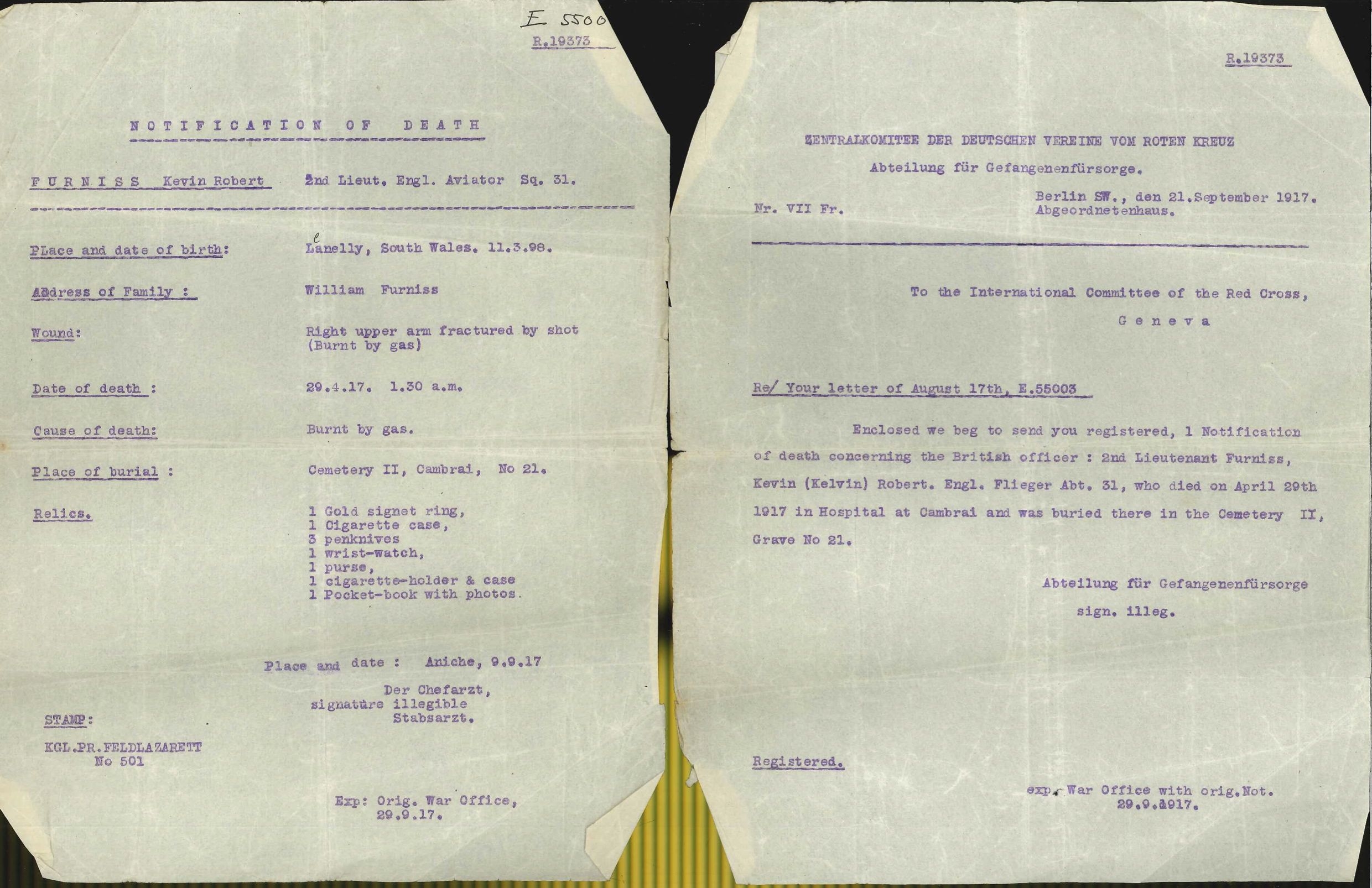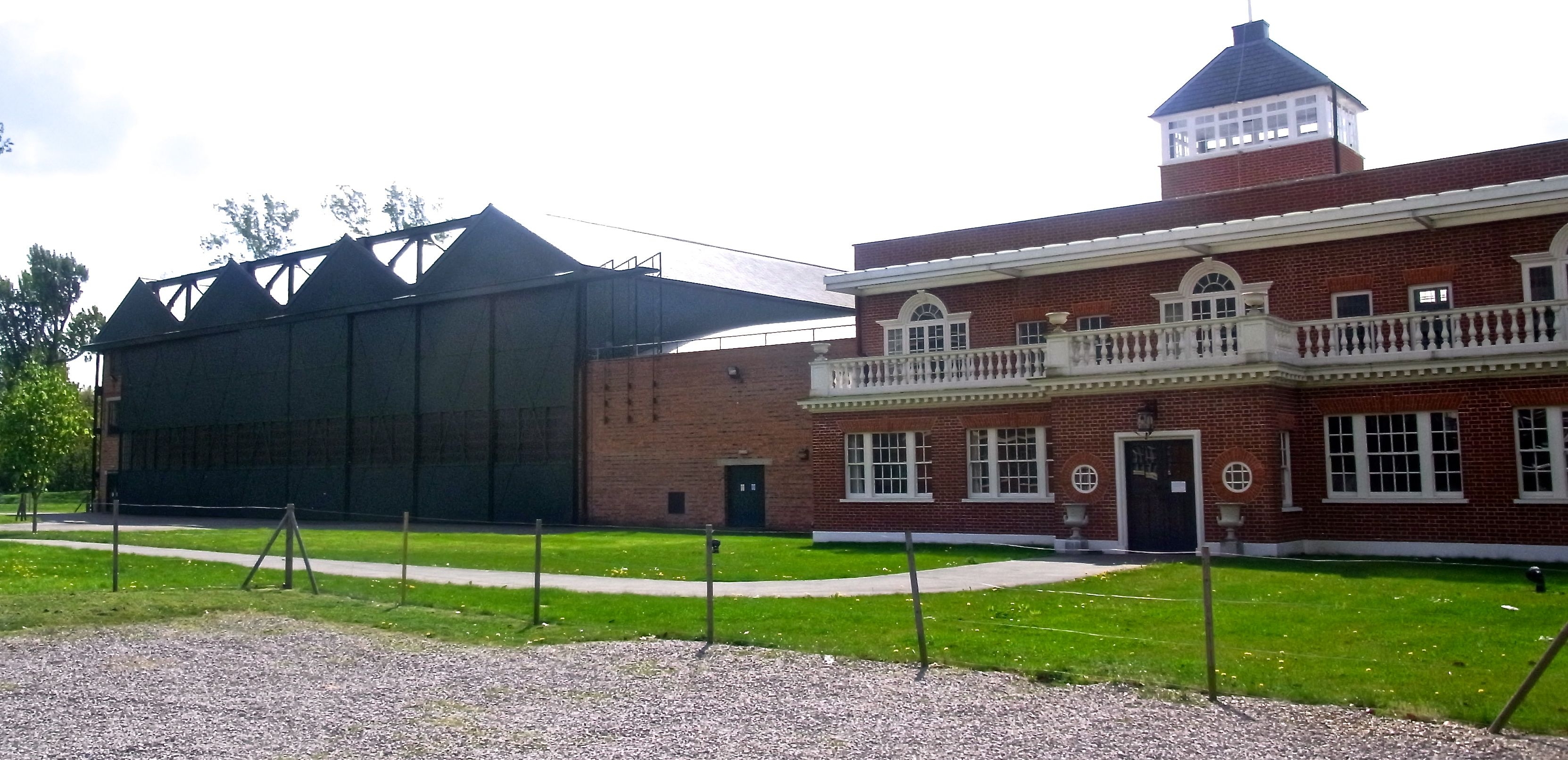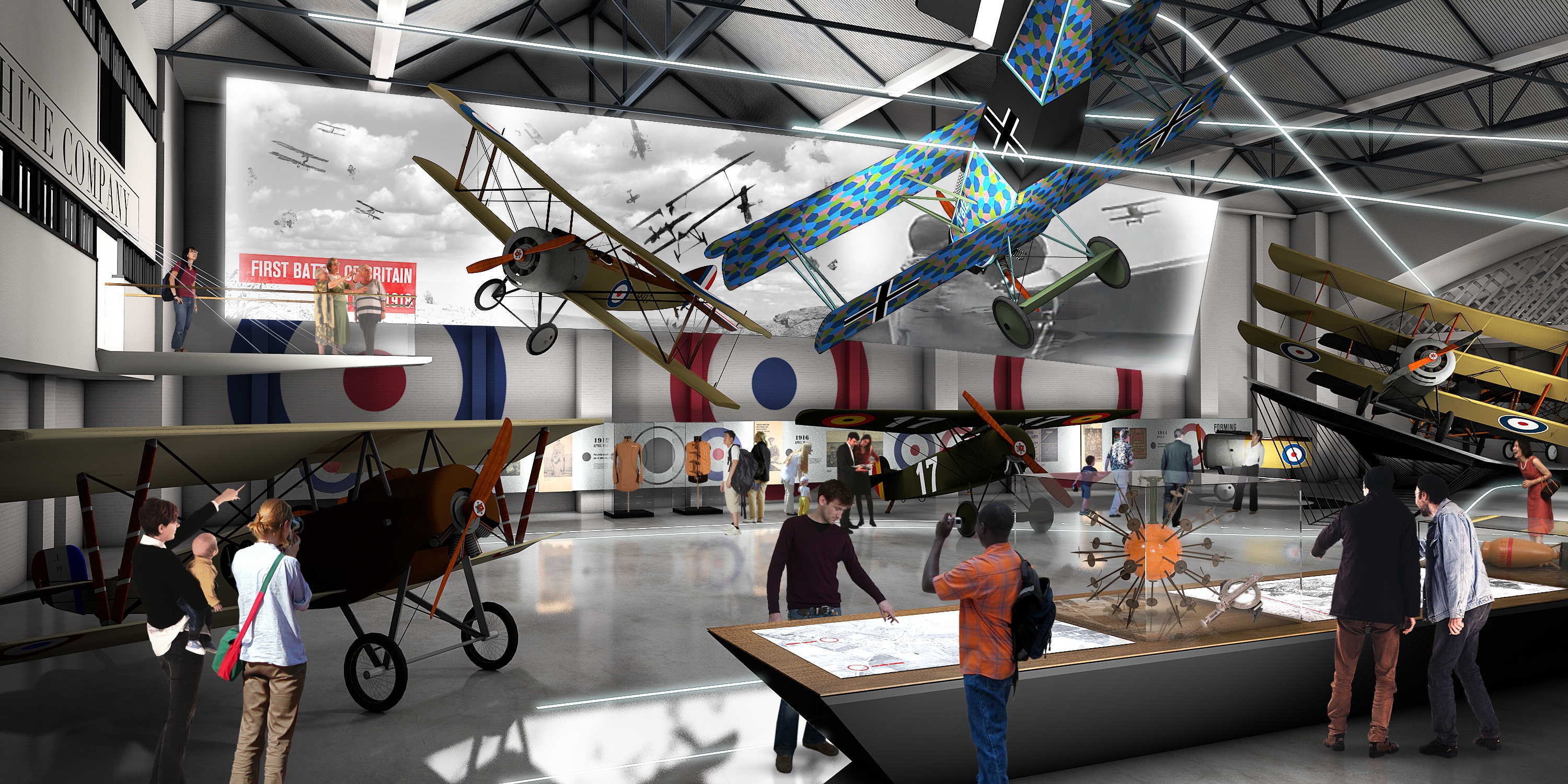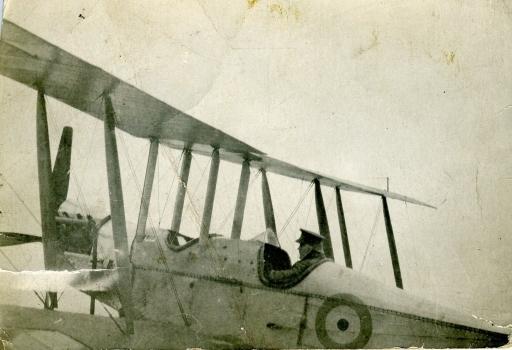The Royal Air Force Museum is developing a new exhibition to explore the growth of air power in the First World War, from early reconnaissance flights through to the coordinated use of aircraft and artillery to help break the deadlock on the Western Front.
‘The First World War in the Air’ will be very much a human story, focussing on the stories of the people behind this pioneering branch of warfare.
The fighting broke out barely more than a decade after the Wright Brothers made the first powered flight. By 1916 control of the skies was becoming a vital part of military operations.
The exhibition, funded with a £900,000 grant from the Heritage Lottery Fund, will be spread across the RAF Museum’s two sites; at Hendon in northwest London and Cosford, near Wolverhampton in the West Midlands.
First World War planes will be a significant feature of both displays but Project Manager Angela Vinci told Centenary News there would be much more too: “We shall be using the whole breadth of our collection, rather than just the aircraft.”
Drawing on documents, film, photographs – many on public show for the first time – the museum says visitors will be able to explore the ‘unique and often overlooked role of air power’ in the Great War.
At Cosford, the exhibition will highlight the stories of individual pilots such as Lieutenant Kevin Furniss, who grew up near Wolverhampton.
Posted to France with the Royal Flying Corps, he was shot down on his second operation and died as a prisoner-of-war on 29th April 1917.

Letter from the German Red Cross giving notification of Kevin Furniss’s death ©Trustees of the Royal Air Force Museum
The 19-year-old pilot’s personal belongings – flying helmet, goggles, photos, letters, even his soap and tobacco – were kept by his younger sister, Muriel, and were recently given to the RAF Museum by his descendants.
Philip Clayton, Education Manager at Cosford, says the collection is unique: “It’s both fascinating and poignant. We hope to use this collection with schools as a way of linking back to the past, and what better way to do that than by looking at the life of a young person.”
In London, a brand new exhibition will open in December 2014 in the Museum’s historic Grahame-White Factory. Part of the Hendon site, this was built by the aviation pioneer, Claude Grahame-White, who turned the rudimentary Hendon aerodrome into a major flying centre shortly before the First World War.

The Grahame-White Watchtower: dating from 1915, it was relocated to the Museum site from an area of the former RAF airfield developed for housing
The exhibition will explore what it was like to be involved in the earliest days of military aviation through the story of Britain’s air services; the Royal Flying Corps and Royal Naval Air Service, and their merger on 1st April 1918 to become the RAF, the world’s first independent air force.
Fourteen planes will be displayed, illustrating the evolution of air power, from reconnaissance to bombing and fighting.
Hundreds of exhibits will be used to bring to life the stories of the pilots and ground crew, as well as the inventors, engineers, manufacturers and factory workers who played a key role in supporting the war in the air.

‘The First World War in the Air’ at Hendon. Visualisation © Ralph Applebaum Associates
Visitors will be able to learn the rules of engagement, as written for British and German pilots. There will also be reconstructions of the flight simulators of the day, based on original drawings in the Museum’s archives.
To modern eyes, some appear little more sophisticated than a rocking horse, but as Project Manager Angela Vinci explains, they’ll give a realistic idea of how Great War airmen learned to fight: “Instead of providing a classic simulator that you could easily have at home with any video game, we thought let’s instead reproduce the device that they were using for training because 100 years ago they had the problem of explaining to the pilot how it would feel to be in a moving cockpit and firing at a moving target.”
Online archives
Accompanying the exhibition will be online access to the RAF Museum’s archive of thousands of casualty cards and casualty forms, providing a rich resource for both genealogists and family historians.
These historical documents are currently a largely untapped source of information, primarily because of their fragility. With the help of volunteers, the plan is to create a complete digitised Great War archive over the four-year Centenary period.
‘The First World War in the Air’ aims to show how aviation changed the character of war through a combination of innovation, sacrifice and a spirit of adventure.
As Angela Vinci puts it: “Control of the air is essential to all military activities on the ground and at sea. This relationship was first defined in the First World War through the effort and endeavours of thousands of men and women experimenting with the cutting edge technologies of the day.”
‘The First World War in the Air’ opens at the RAF Museum Hendon in December 2014; and at Cosford in February 2015.
Information supplied by the Royal Air Force Museum
Images courtesy of the Trustees of the Royal Air Force Museum ( Lt Kevin Robert Furniss in a B.E.2c, RFC Upavon, 5 March 1917 and letter notifying death); Ralph Applebaum Associates (exhibition visualisation); Peter Alhadeff, Centenary News (Grahame-White Watchtower & Factory)
Posted by: Peter Alhadeff, Centenary News
